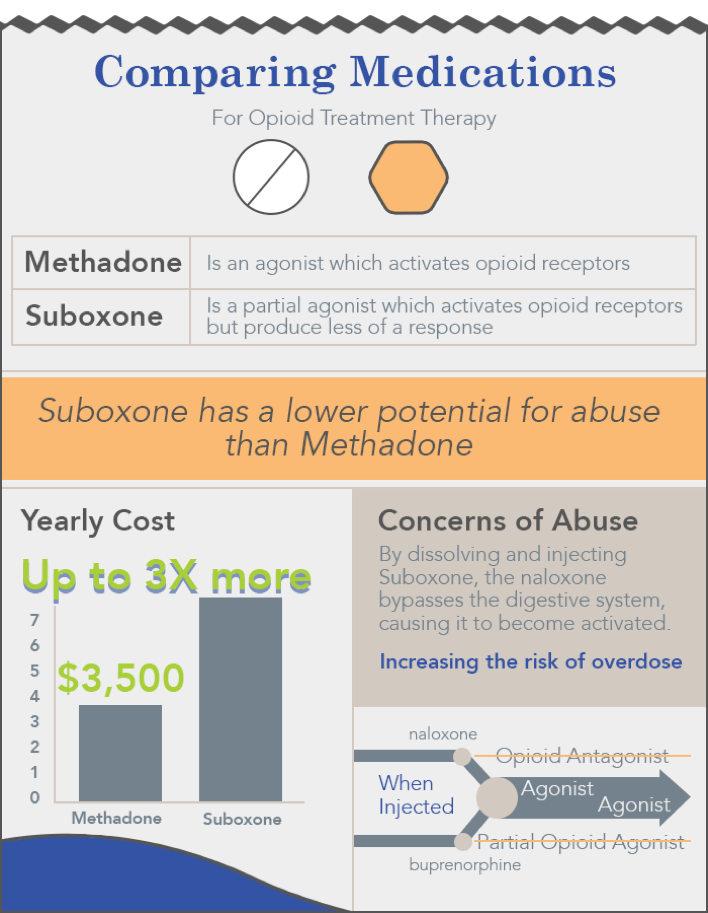The three drugs used in recovery program
 The three drugs used to assist with withdrawal are methadone, naltrexone, and suboxone. Methadone has been the standard medication-assisted treatment used for more than 30 years. Studies show that using this opioid as part of a recovery program improves physical and mental health, and decreases the number of deaths from opioid abuse. When taken correctly it suppresses withdrawal symptoms, blocks the effects of other opioids and minimizes cravings.
The three drugs used to assist with withdrawal are methadone, naltrexone, and suboxone. Methadone has been the standard medication-assisted treatment used for more than 30 years. Studies show that using this opioid as part of a recovery program improves physical and mental health, and decreases the number of deaths from opioid abuse. When taken correctly it suppresses withdrawal symptoms, blocks the effects of other opioids and minimizes cravings.
Like methadone, naltrexone is known as an opioid blocker, that blocks the pain-relieving and euphoric of opioids like heroin. It doesn’t have the same addictive properties, it doesn’t result in a physical dependence and a tolerance for the drug doesn’t develop. However, there are a few disadvantages to using naltrexone.
Unlike methadone and suboxone, it doesn’t suppress the symptoms associated with withdrawal, or the cravings. It can’t be taken until a patient has been off opioids for at least two weeks, and for most, it’s almost impossible to abstain for this period of time. Also, the risks of overdose are increased if, or when, relapse occurs.





